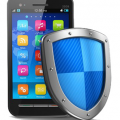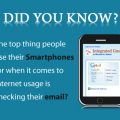The media has been abuzz lately with rumors and myths surrounding the possibility of next generation tablets and smartphones being shaped in a gentle curve for comfort and functionality. But while some ideas seem fantastic and impossible, others seem rather plausible and could actually become a reality in the next few years. Of course, these potential shapes and functions may have drawbacks to users, but they will nonetheless present a new and exciting development that may change the way we talk on the phone.
Ease of Speaking
One of the most innovative and useful reasons for having a curved phone is that it makes it easier to talk to others. For many smartphone users, it can be a pain to speak and listen, as the earpiece and mouthpiece don’t cater to the face very well. Curved phones attempt to rectify problem though, as the curve of the device will better fit to the form of the average face, allowing for maximum comfort when speaking.

Larger Screen and Better Display
Naturally, with a curved phone screen comes the addition of extra surface area, meaning that curved smartphones and tablets will have larger displays that can either fit more information, or have larger applications to cater to those who cannot see as well. Furthermore, curved screens on phones and tablets, like their television counterparts, are much more pleasant when viewed in ambient light. Because of the nature of the display and the material, fewer reflections will appear on the surface, allowing for a more comfortable viewing experience for the owner.
Virtually Unbreakable
Most phone displays now are created with a specific type of glass that, as can be seen by the plethora of cracked screens nearly everywhere, can be easily shattered upon even minor impact. And while cases and screen protectors have popped up to help mitigate this problem, users have long been clamoring for a sturdier option that will ensure a longer life span for these expensive devices. Curved phones though, will show the next innovation in unbreakable technology, as they will be created with flexible substrates instead of glass, and will be able to withstand much more powerful impacts. Furthermore, the curve of the screen will also make it harder for users to directly damage their screen.
Drawbacks
Just like any other technological innovations, curved screens come with a few drawbacks. For one, some are fearful of how a curved phone will feel in their pocket, and whether or not it will seem cumbersome when stored. Additionally, because the curved phone must utilize a specific type of flexible battery, nobody is sure whether or not this will be a leap forward from current technology, or a sideways step soon to be forgotten. Ultimately, the drawbacks of curved phone technology lies in the unknown, as these will not appear on the US market until sometime in 2014.
Phones and Tablets of the Future
Throughout history, phone and tablet technology has seen multiple innovations to help these devices become the incredible pieces of machinery they are today. And now, with the creation of curved displays, the world may be privy to one of the most advanced developments at the comfort of its fingertips.
This article was provided by CJ Gordon, recent Computer Science graduate and gadget guru. If you’re a gadget owner, CJ recommends a Kensington tablet keyboard for easy tech access on the go.
































No Comments
Leave a comment Cancel